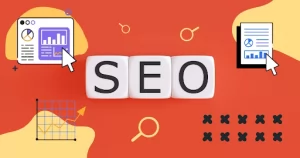Introduction
It is so due to the added factors of globalization and the increased need for special SEO tricks that go beyond the mere basics to keep up with the advancing world we live in. Thus, the combination of SEO data analytics methods into SEO activities has changed the approaches to audience definition, estimation of outcomes, and iterations. In addition, SEO Data Analytics involves offering insights to the marketers in regard to user behavior, keyword, and content analysis which would help in better decision-making. Therefore, this article explores how data analytics has become central to creating more intelligent SEO strategies and how to implement this to best effect. Also, we will discover how data analytics offers businesses ways to enhance content, improve targeting, and deliver measurable outcomes in today’s growing crowded web environment.
How Data Analytics Shapes Smarter SEO Strategies
1. Understanding User Intent
SEO Data analytics tools, such as Google Analytics and Search Console, play a crucial role in helping businesses identify the queries users use to find their sites. Furthermore, by understanding search intent—whether informational, navigational, or transactional—you can tailor content that not only meets user expectations but also drives greater engagement. Consequently, these insights enable businesses to create more targeted and effective SEO strategies.
2. Keyword Optimization
Analyzing keyword performance data reveals which terms generate the most traffic and conversions. Advanced tools like SEMrush or Ahrefs provide insights into keyword difficulty, search volume, and trends, helping refine targeting efforts.
3. Content Performance Analysis
Tracking metrics like page views, time-on-page, and bounce rates highlights the effectiveness of your content. Identifying high-performing pieces allows you to replicate success, while underperforming content can be updated or restructured.
4. Competitor Analysis
Data analytics for SEO enables the analysis of competitor strategies, revealing gaps and opportunities in their SEO approach. Tools like SpyFu or SimilarWeb help monitor competitor keywords, backlinks, and traffic sources, giving you an edge.
5. Optimizing Technical SEO
6. Predictive Analytics for SEO Trends
Using predictive analytics simplifies the process of anticipating future trends and understanding user behavior. By analyzing historical data, businesses can identify emerging opportunities and optimize their strategies accordingly.
7. Tracking ROI and Performance Metrics
Data analytics provides a clear view of the return on investment (ROI) for SEO campaigns by tracking metrics like organic traffic, conversion rates, and cost per lead. These insights ensure that efforts align with business goals.
Practical Ways to Leverage Data Analytics for SEO
1. Set Clear Goals and KPIs
Define specific objectives for your SEO efforts, such as increasing organic traffic or improving keyword rankings, and track key performance indicators (KPIs) regularly.
2. Use Heatmaps and User Flow Analysis
3. Leverage Real-Time Data
Monitor real-time analytics to capitalize on trends or adjust strategies for time-sensitive campaigns.
4. Segment Your Audience
Analyze data by audience segments (e.g., location, device, demographics) to tailor SEO strategies to specific user groups.
5. A/B Testing for SEO
Experiment with different headlines, meta descriptions, or content layouts to determine what resonates best with your audience.
Conclusion
In today’s competitive digital landscape, data analytics for SEO is no longer optional for businesses aiming to refine their strategies; instead, it has become an essential tool for success. By leveraging data to understand user intent, optimize content, and address technical issues, businesses can make well-informed decisions that yield better results. Moreover, integrating data analytics into your SEO approach not only enhances performance but also ensures alignment with evolving user expectations and search engine algorithms. Therefore, embracing the power of SEO data analytics today is crucial for unlocking smarter and more effective strategies that drive sustainable growth.
